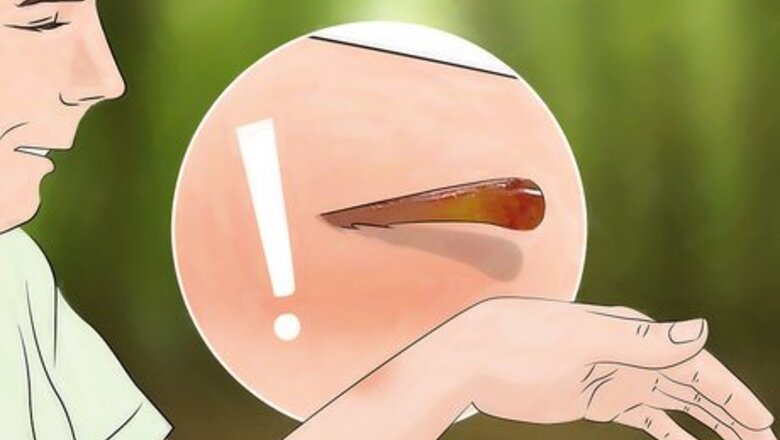
views
X
Research source
If you get stung, it is important to get the stinger out as quickly as possible before the entire contents of the venom sac enter your skin in seconds.[2]
X
Trustworthy Source
Mayo Clinic
Educational website from one of the world's leading hospitals
Go to source
There are a couple ways to do this.
Removing the Stinger
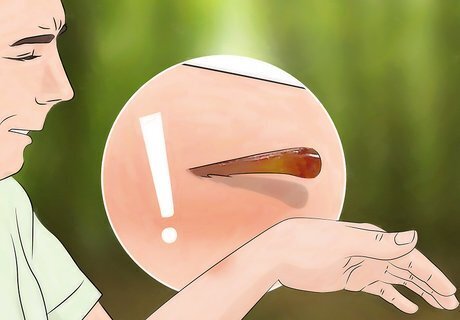
Act fast. If you can remove the stinger before all of the venom in the venom sac enters your body, this will help minimize the effects of the sting. The venom enters your skin in seconds, so act as soon as you feel the sting. When removing the stinger, be careful not to squeeze the venom sac at the end of the stinger. Doing so may increase the amount of venom that goes into your skin.
Wash the area with soap and water before removing the stinger. Stingers can have germs and bacteria on them, so it's a good idea to clean the wound before you try to remove the stinger. However, remember to do this fast, as you want to remove the stinger before the venom enters your body. Rinse the area with warm water, then apply soap using your fingers. Rinse off the soap with warm water. If you don't have access to soap and water, use a hand sanitizer to clean the area.
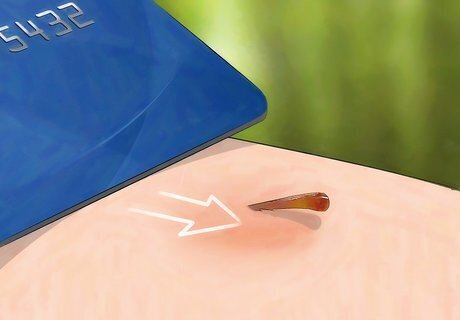
Scrape the stinger out. Scrape across the stinger until you dislodge it from your skin. You may be able to see the venom sac at the end of the stinger. Again, be careful not to squeeze the sac. For this method, a thin object with a straight edge works best. Items you can use include: The back of a pocket knife. If you are using a knife to remove the stinger from someone else, only do so if the person is able to be still enough that you are confident you won’t cut them. Do not use this method on a child whose movements may be unpredictable. The edge of a credit card (or driver's license, etc.). This method is safe to use on a child because there is no risk that you could injure him or her with the card.
Apply a non-seasoned meat tenderizer paste to a stubborn stinger. A meat tenderizer may help you get the stinger out more easily, and it can also neutralize some of the venom. Mix a small amount of meat tenderizer with water to make a paste. Then, apply the paste to the stinger for 15-20 minutes. Rinse off the paste with warm water before you resume trying to remove the stinger. Make sure the meat tenderizer doesn't contain spices, as they might burn your sting.
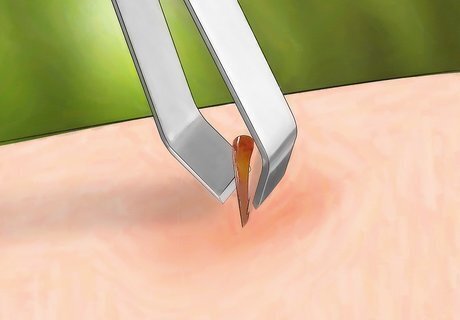
Pull the stinger out. Use tweezers or your fingernails to pull the stinger out. Grasp the stinger as close to your skin as possible. Try to grip it below the venom sac so that you will not squeeze more venom into your skin. Pull out with a slow steady pressure. The stinger may be barbed, so it may be uncomfortable as you remove it. Do not jerk the stinger out. This increases the risk that it will break, leaving a smaller, more difficult to remove fragment in your skin.
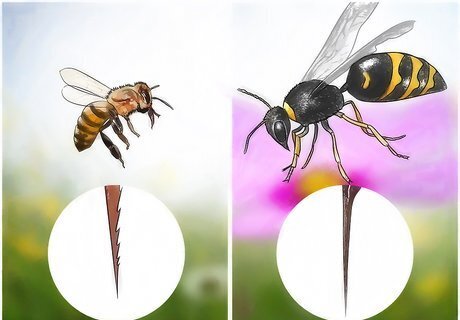
Do not worry if you don’t find a stinger. Wasps and hornets usually do not leave the stinger in the victim’s skin, so you may not find a stinger. If you have been stung by a wasp or hornet, they can sting repeatedly. Calmly but quickly leave the area where you were stung to avoid getting stung again.
Treating a Sting
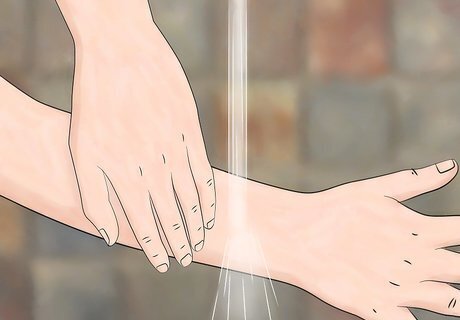
Wash the sting. After you have removed the stinger, wash the area with soap and water. This will clean it and reduce the chances of it becoming contaminated with dirt or bacteria. Hold the sting under running water for several seconds to thoroughly flush the area of dirt and debris. Gently rub the area with a mild soap and rinse thoroughly. Pat the area dry.
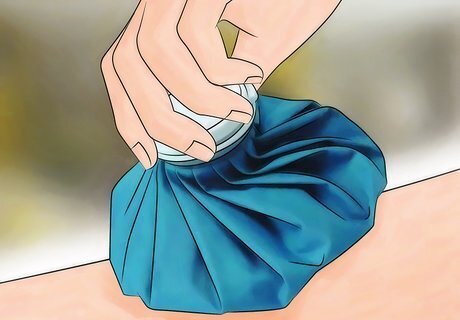
Reduce swelling with an ice pack. Apply ice wrapped in a clean towel to the sting. Apply the cold pack for 10–15 minutes, and then remove it for ten minutes to allow the tissue to warm up, before reapplying it. If you have circulation problems, then use the ice for less time to reduce the risk of frostbite. If you do not have an ice pack handy, a bag of frozen vegetables wrapped in a towel will work just as well. Do not put the ice directly on your skin because it can cause frostbite. Wrap it in a towel or cloth.
Take an over-the-counter antihistamine for itching and swelling. Check with your doctor before using an antihistamine to make sure it's safe for you. For daytime relief, adults can take 10 mg of loratadine (Claritin) or 10 mg of cetirizine (Zyrtec) once a day. If your sting is very itchy, take 25 to 50 mg of diphenhydramine (Benadryl) before bedtime. Continue to use your antihistamine until your sting feels better. Don't take more of the antihistamine than recommended on the label.
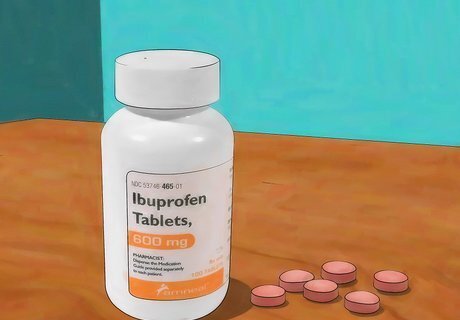
Reduce pain with over-the-counter painkillers. Consult your doctor before taking these medications if you are pregnant, nursing, treating a child, or on other medications which could interact. Do not give children or teenagers aspirin. Follow the manufacturer’s instructions. Possible medications include: Paracetamol Ibuprofen Acetaminophen (Tylenol)
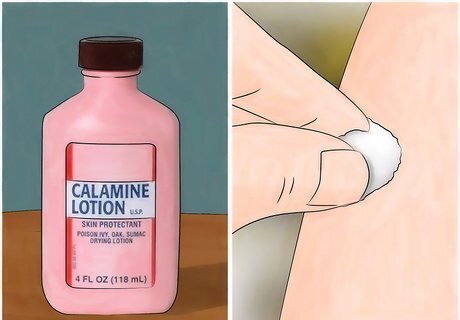
Combat itching and swelling with a topical cream or spray. The amount of localized swelling that people get varies from person to person. In addition, while the sting may hurt at first, it may itch more later. Possible treatments include: Hydrocortisone cream (1%) - apply a thin layer to the affected area 4 times daily, as needed Calamine lotion An oral antihistamine with diphenhydramine (Benadryl) or chlorpheniramine (Chlor-Trimeton)
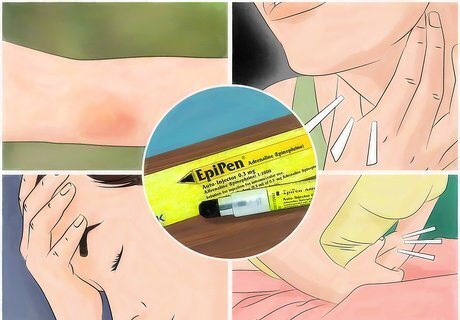
Monitor yourself for anaphylactic shock. If you know you are allergic to bee stings, you have likely been prescribed an emergency epinephrine autoinjector (EpiPen, Twinject). Use it according to your doctor’s orders and the manufacturer’s instructions. If you have used an epinephrine injector or you are going into anaphylactic shock, call emergency responders immediately. Symptoms include: Itchy skin Red rash Swelling of the eyes, lips, hands, feet The feeling that your throat is closing or swelling of the mouth, throat, or tongue Difficulty swallowing Difficulty breathing Abdominal discomfort Nausea or vomiting Unconsciousness


















Comments
0 comment